Legal accounting 101: Prep for audits and satisfy clients with Settlement Statements
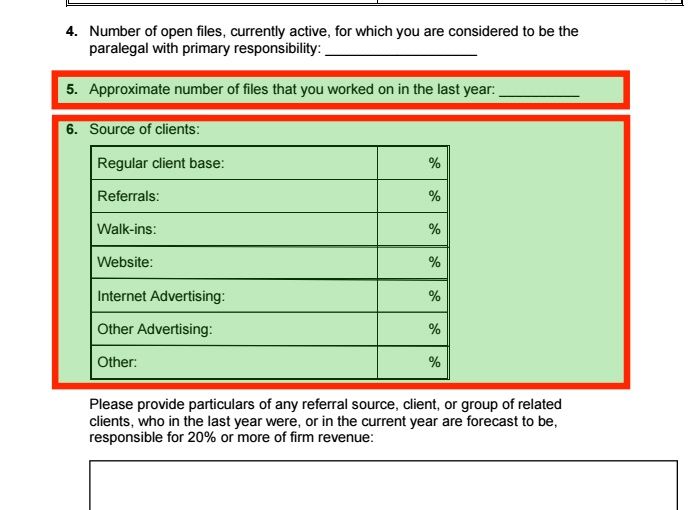
Settlement statements are a crucial way to build your brand and satisfy clients while preparing you for scrutiny from regulatory auditors in jurisdictions across Canada.
What's a settlement statement, anyway?
A settlement statement is a nifty document that breaks down the constituent elements of work your legal firm has conducted on behalf of a client, notwithstanding whether the entire scope of the legal matter has been completed. What this allows for is greater client-practitioner transparency.
A client who views a recently produced settlement statement has the opportunity to look at an updated & fresh breakdown of fees, disbursements and work conducted by the practitioner over a period of time.
Lawyers and paralegals who create settlement statements for their clients aren't just satisfying large corporate clients who expect to see this kind of breakdown.
Generating a settlement statement also fulfills (and effectively produces evidence of) some of the most onerous audit requirements expected to be produced when auditors start knocking at the door, which happens more often than you might think.
In Ontario, a common auditing practice by the Law Society of Ontario (LSO) is to conduct Spot Auditing, which specifically targets new and mid level law and paralegal firms.
Thirteen full time auditors scrutinize the activities of 25 per cent of all paralegal firms in the province, according to LSO spot auditing documentation. (re LSUC on Spot Audit)
This means that every four years a paralegal in Ontario can be expected to produce a myriad of documentation indicating evidence of sound practice management. During this procedure an auditor will provide a copy of Ontario’s “Basic Management Checklist” for a practitioner to review, often with the assistance of a legal accountant or assistant who can help obtain the data necessary to satisfy the requirements.
This is what it looks like.
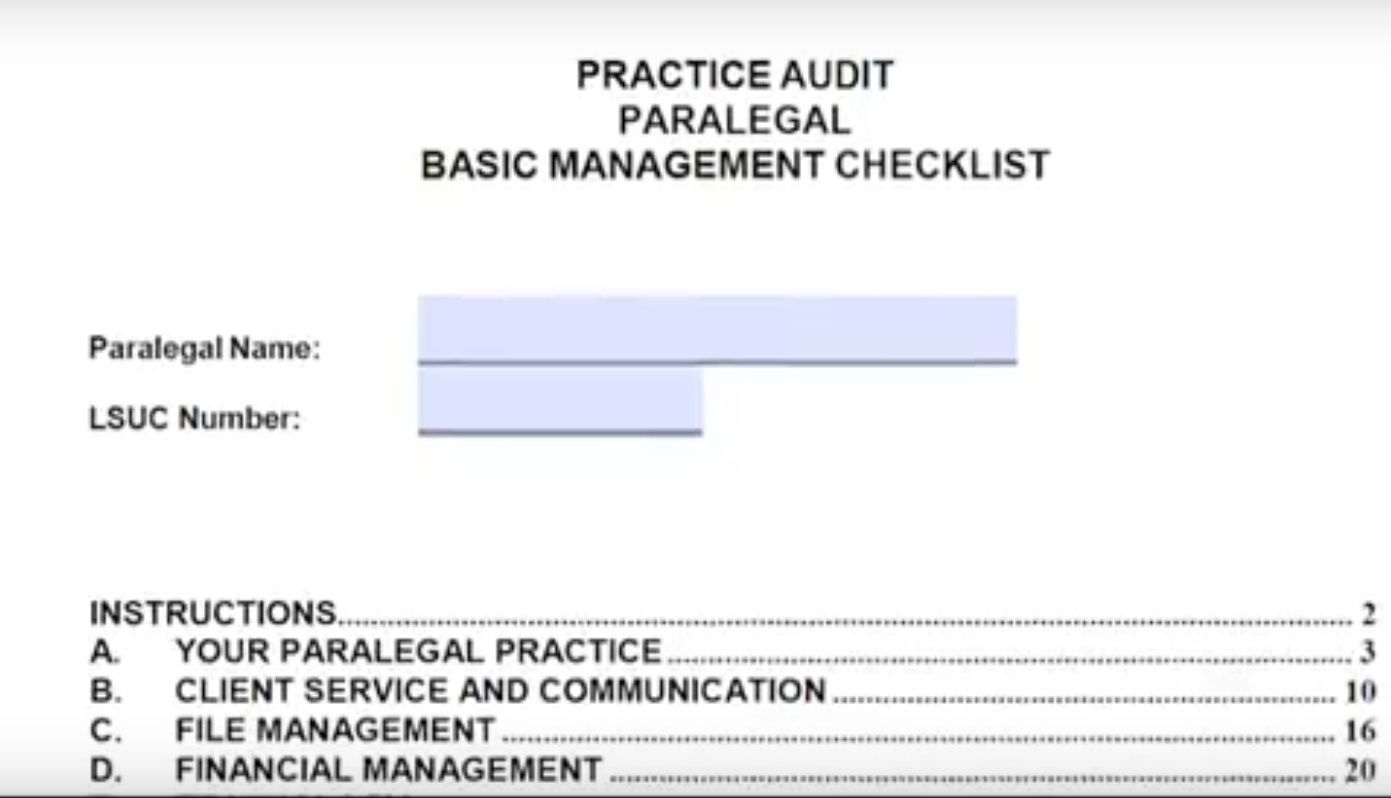
Preparing documents for an upcoming audit was once a stressful, hair splitting and time-consuming procedure for a practitioner. Digging through filing cabinets and Excel spreadsheets, a panicking paralegal can usually satisfy a fair amount of the criteria listed on this checklist if a bit of number crunching is conducted by an assistant or accountant.
Take a look at this one.
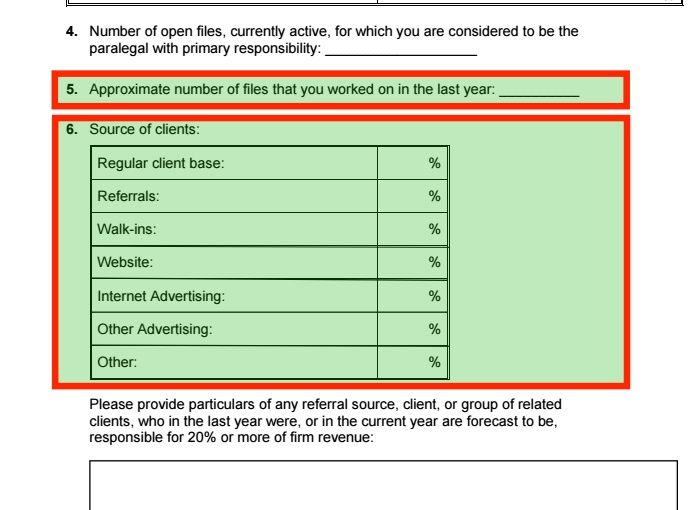
That doesn’t sound so bad, does it? Identifying the source for your clients might take a while, but it’s at least tabulating a few percentages in a reasonable time frame doesn’t take that much effort to produce without software.
(Software can, however, churn through your client data and produce pie charts satisfying law society obligations with a few clicks of a button)

Producing source of contact documentation for auditors isn’t rocket science, and though it might be streamlined through document generation, it certainly can be done manually with a bit of work.
But other criteria requested by auditors is a little more difficult to obtain the old fashioned way. For example, take a look at numbers 40 and 41 of the Basic Management Checklist.
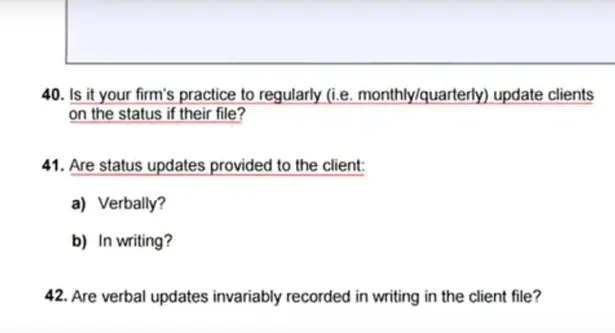
Even when conducted verbally, auditors are expecting some form of writing indicating that clients are being apprised of ongoing legal matters handled by a firm.
The best and most professional method of satisfying this component of the Basic Management Checklist is to produce settlement statements for clients one or more times each year. Unfortunately, while highly effective at articulating the degree of work conducted by a practitioner on behalf of a client, a settlement statement can’t be created manually without allocating an unnecessary and lengthy period of time for its creation.
With the use of automated software, template settlement statements retrieve digital data about a client’s case and within a few short clicks a paralegal is able to produce a document fit to be sent to a client.
Instead of juggling more than a dozen documents all at once just for a single client, a practitioner can navigate to “Document Generation” and produce a settlement statement and let software do all the heavy lifting associated with producing advanced analysis of a firm’s handling of disbursements, fees, etc with ongoing legal matters.
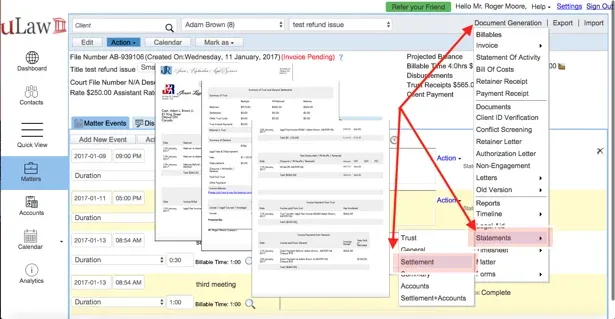
Corporate clients often have an expectation of regular settlement statements to observe the nature and scope of the work conducted by practitioners they have on retainer. Producing this kind of document allows for a practitioner to build a brand while also pushing for excellence among clients and auditors alike.
Give it a shot.
Tags: Audit preparation

